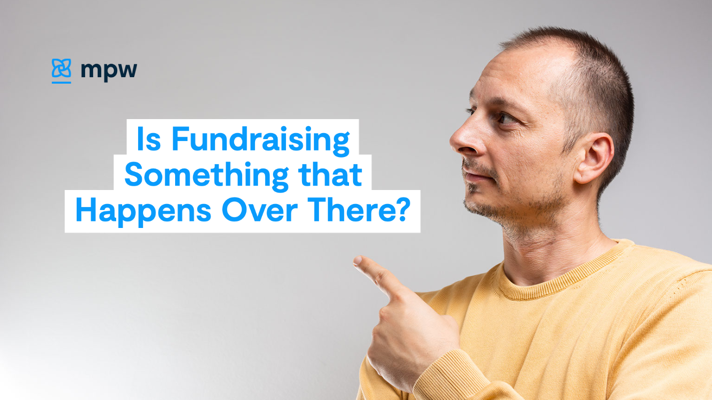Does your organization think fundraising is something that happens over there…?
So, tell me, what is that you do in your department? That phrase, spoken with a bit (or a lot) of...
Scroll Down

So, tell me, what is that you do in your department? That phrase, spoken with a bit (or a lot) of disdain, is often directed to development professionals from the staff of their organizations. The implied meaning of the phrase is “why don’t you go out and get me some money or pay attention to my specific needs.” It does not imply “let's work together as a team” or "how can I support your efforts."
Throughout my career, I have worked in development operations that were out of sync with the rest of the organization, an island onto themselves. It’s frustrating, defeating, and it’s more often the case. It makes raising dollars, especially major gifts even more challenging.
The rest of the organization feels that fundraising is something that’s done “over there,” and rarely participates, and while unknowingly, even creates stumbling blocks to growth and success. You know there are non-development staff that could really help with fundraising, only if you could show them the way of creating greater donor experiences. Additionally, when it comes to raising funds not all staff need to be on the front lines as there is a place in the process for everyone.
When the organization accepts, understands, and embraces the work of the development department the ability to engage more donors in better ways increases substantially, and the whole institution benefits from the increased donor investment. When fundraising is no longer a one-way street, the ability to grow, bring about improvements, and realize greater success is fully supported.
How do you break down these barriers and bring unconditional acceptance of the importance and impact of your fundraising work? How do you build a culture of philanthropy? Well, you probably can’t do it overnight, but you can begin to bring your colleagues from other departments into the fold, help them understand, and even build collaboration in your efforts.
By following these steps, you can be on your path to getting off the island and begin building a culture of philanthropy. These steps could be taken as a 3-4-hour training, or conducted as separate sessions over time.
1. Demonstrate the impact and wonder of philanthropy: talk about the power of philanthropy often and always. How it benefits the organization and fulfills your mission and even vision, the journey and the positive feeling it can evoke from the donor and recipient, and that everyone can and should be involved in philanthropy.
2. Discuss the giving experience: what are the biggest giving motivators, why do people not invest, invite donors to speak about their giving, provide testimonials of productive partnerships.
3. Explain the process of donor engagement and giving: how donors are different, connecting and giving is relationship-based, the various types of gifts, levels of commitment to the organization, and the time it takes to connect donors to your organization in a significant way. Demonstrate how you utilize both art and science when building relationships with donors and making asks.
4. Address the different ways your non-development colleagues can be involved in the fundraising process: defining and building the vision, identifying donors (alumni, members, volunteers, patients, etc.), helping to build relationships, serving as an ambassador, stewardship, and involvement in the solicitation.
5. Open-up about your fundraising process: do away with perceptions that there’s some black magic taking place that your non-fundraising colleagues couldn't possibly understand. Show them the process of engaging donors, why you focus on certain donors, even let them see a template portfolio and pipeline. Discuss how priorities or opportunities for investing are set, how you measure your work. I guarantee if you show them the process they will understand and even embrace fundraising.
This is by far not an exhaustive list. Several other concepts for building a culture of philanthropy are not included and might better fit your organization. The bottom line is that the more you engage the people of your organization in the philanthropic process the better they will be able to partner with you. With this new-found collaboration and culture of philanthropy, you will be sure to start experiencing greater returns in your fundraising efforts. You will be able to grow your efforts and bring about change.
So what do you think? These are just some of the methods in which you can begin to build a culture of philanthropy. I invite you to comment below on other ideas and experiences that you feel would be effective.
So, tell me, what is that you do in your department? That phrase, spoken with a bit (or a lot) of...
As a development leader, one of your roles is to help your colleagues understand that your work is...
A few weeks ago, I wrote about challenges facing development departments when an organization...